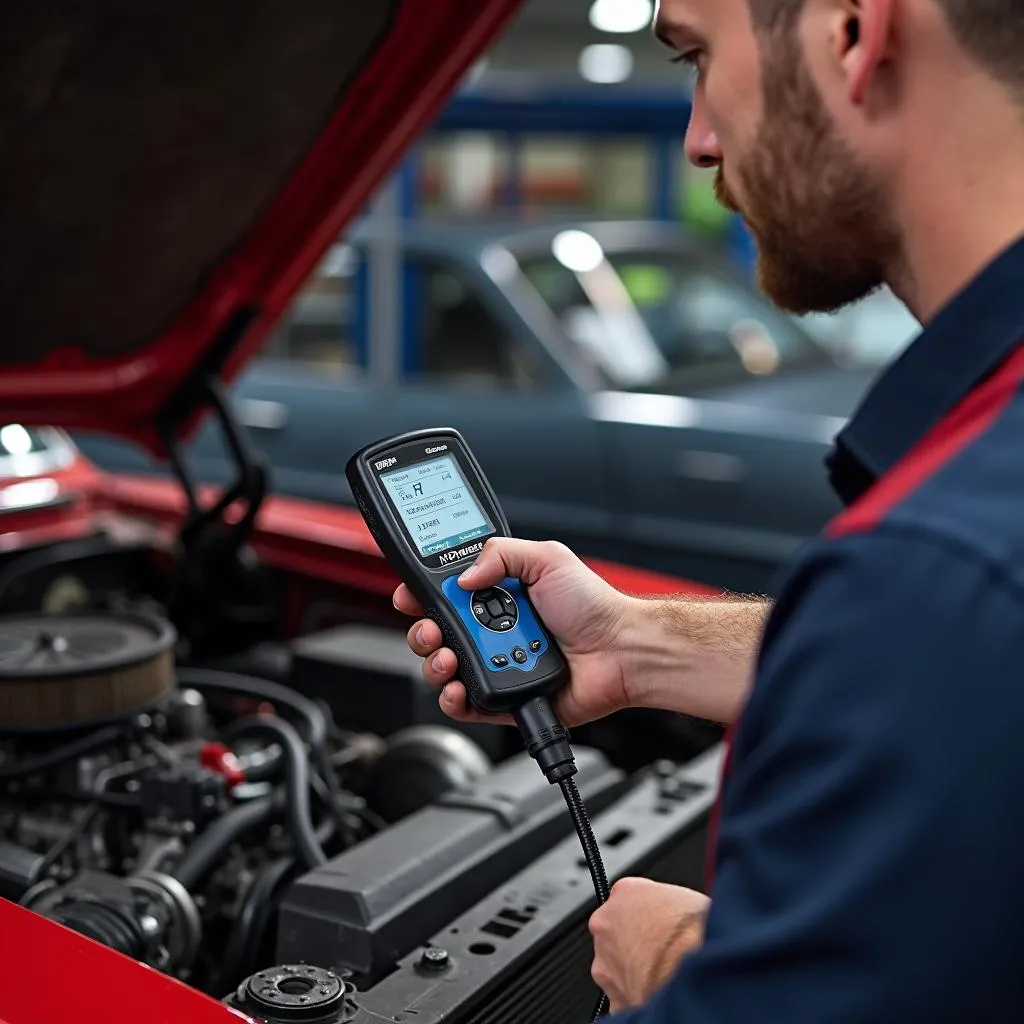Remember the good old days when cars were simpler, and a wrench was all you needed to diagnose an engine problem? Those days are long gone, my friend. Even vehicles from the OBD 1 era (roughly 1981-1995) can benefit from a scan tool, especially if you’re tackling those pesky check engine lights. But with so many options on the market, finding the best featured OBD 1 scan tool can feel like searching for a carburetor in a Tesla showroom.
If you’re looking to delve into the world of DIY car repair for your classic ride, checking out a modern scan tool, like those from our Best Auto Scan Tool 2023 list is a great place to start. Even though they might not have all the bells and whistles for your OBD 1 car, they can still offer valuable insight.
Decoding the OBD 1 Enigma
Before we dive into the best scan tools, let’s understand what we’re dealing with. OBD 1 systems were the wild west of automotive diagnostics. Each manufacturer had its own proprietary connector and communication protocol. Imagine needing a different translator for every Italian you met, and you get the idea.
This lack of standardization meant limited data and functionality. You wouldn’t get those fancy live data streams or bi-directional controls we enjoy today. Think of it as reading smoke signals versus having a Zoom call with your engine.
What to Look for in an OBD 1 Scanner
So, you’re ready to embrace the retro world of OBD 1 diagnostics. Good for you! Here’s what to consider when choosing a scan tool:
1. Vehicle Compatibility:
This is paramount. OBD 1 scanners are not universal. Some cater to specific makes (GM, Ford, Chrysler), while others cover European imports like those used with the Schwaben BMW Mini Scan Tool. Ensure the scanner you choose supports your vehicle’s make and model.
2. Features:
Don’t expect a feature-packed extravaganza with OBD 1 scanners. However, essential functions to look out for include:
- Reading and clearing codes: This is the bread and butter of any scan tool. It allows you to identify the source of the check engine light and clear it after repairs.
- Live data stream: While limited compared to OBD 2, some scanners offer basic live data for parameters like engine RPM, coolant temperature, and throttle position.
- Data logging: This feature allows you to record data over time, which can be helpful for diagnosing intermittent problems.
3. Ease of Use:
OBD 1 scanners should be straightforward, even for beginners. Look for a scanner with a clear display, intuitive menus, and easy-to-understand instructions.
 Mechanic using an OBD1 scan tool on a classic car
Mechanic using an OBD1 scan tool on a classic car
Top Contenders: Unveiling the Best
While the OBD 1 era predates the internet’s vast review landscape, some tools have stood the test of time and garnered praise from vintage car enthusiasts:
- Actron CP9145: A popular choice for its coverage of domestic vehicles and user-friendly interface.
- Innova 3100: Known for its code-reading capabilities and live data streaming on select models.
- Foxwell NT301: This one’s for the DIY mechanics who want a tool that can do more than just read codes. The NT301 can also perform some advanced functions, like resetting the oil light and reading ABS codes.
Remember:
OBD 1 scanners are becoming increasingly rare as time marches on. If you own a classic car, investing in one sooner rather than later is wise. It’ll be your trusty sidekick in keeping your vintage beauty running smoothly.
Beyond the Scanner: Additional Tips
Even with the best OBD 1 scan tool, diagnosing car problems requires a holistic approach. Don’t underestimate the power of:
- Consulting factory repair manuals: These are goldmines of information specific to your vehicle’s make, model, and year.
- Utilizing online forums: Connecting with fellow enthusiasts can provide invaluable insights and troubleshooting tips.
- Seeking professional help when needed: Don’t be afraid to call in the cavalry if you’re in over your head. A qualified mechanic specializing in vintage vehicles can save you time, money, and potential headaches.
 Experienced mechanic repairing a classic car's engine
Experienced mechanic repairing a classic car's engine
FAQs: Answering Your Burning Questions
Can I use an OBD 2 scanner on an OBD 1 car?
Unfortunately, no. OBD 1 and OBD 2 systems are not compatible. Using an incorrect scanner can potentially damage your vehicle’s electrical system.
My OBD 1 scanner isn’t reading any codes. What should I do?
First, double-check that the scanner is compatible with your vehicle. Next, ensure the scanner is properly connected and the vehicle’s ignition is turned to the “on” position (but not running). If problems persist, consult the scanner’s user manual or contact the manufacturer for support.
Are OBD 1 scanners still available?
Yes, but they are becoming increasingly difficult to find. Your best bet is to search online retailers or automotive specialty stores.
Driving into the Sunset: Preserving Automotive History
While the OBD 1 era may be fading into the rearview mirror, the passion for these classic vehicles remains strong. By equipping yourself with the best featured OBD 1 scan tool and a healthy dose of knowledge, you can keep your vintage ride running smoothly for years to come. Remember, keeping these automotive legends alive is about more than just maintenance; it’s about preserving a piece of history.
For those who are interested in learning more about specialized scan tools, like those designed for fuel injector balance testing, our article on the Auto Scan Tool Fuel Injector Balance Test offers a deep dive into this essential diagnostic procedure.
Need help navigating the world of OBD1 or looking for expert advice on diagnostic tools? Our team at Diag XCar is here to help. Contact us on Whatsapp at +84767531508 for 24/7 support from our experienced automotive specialists.


